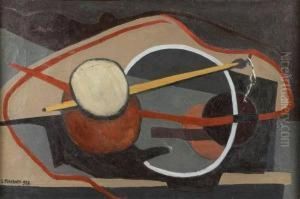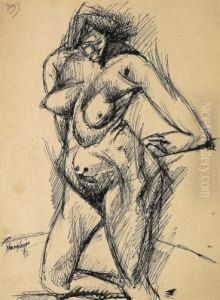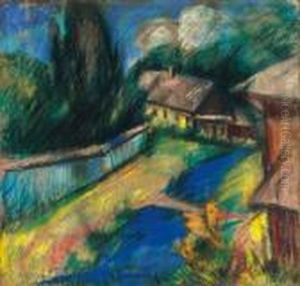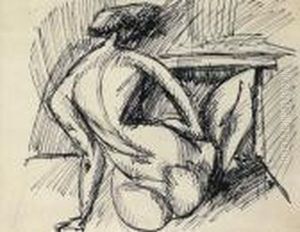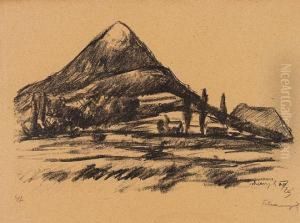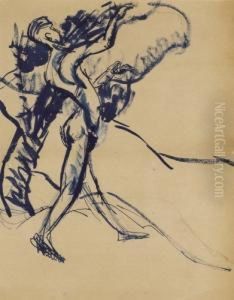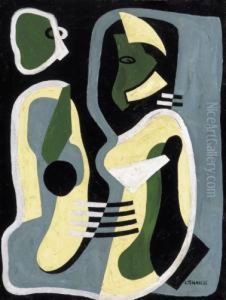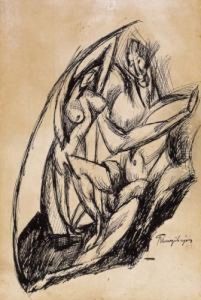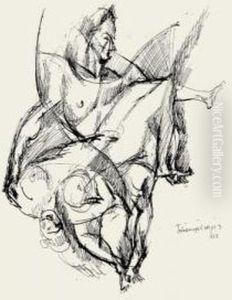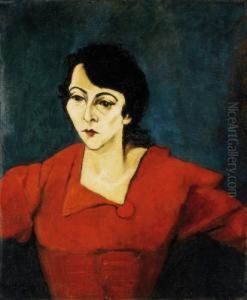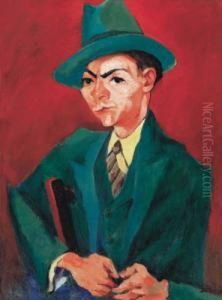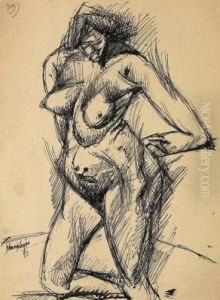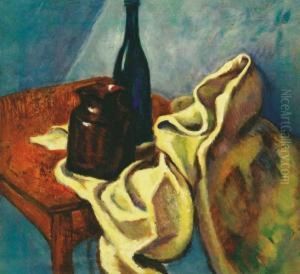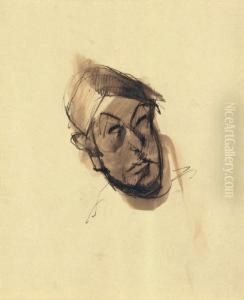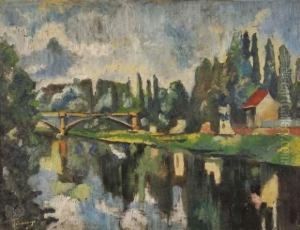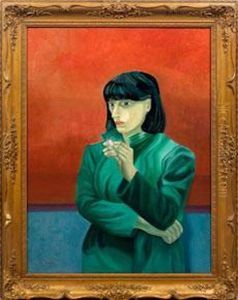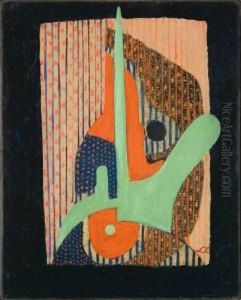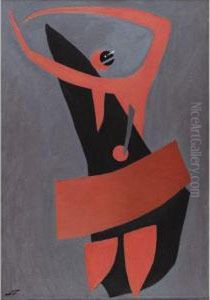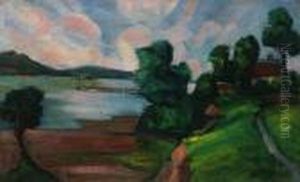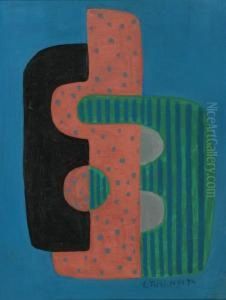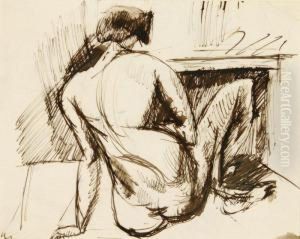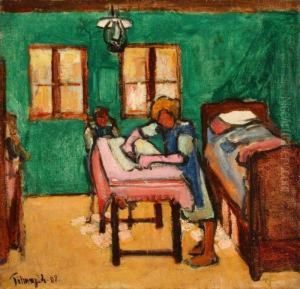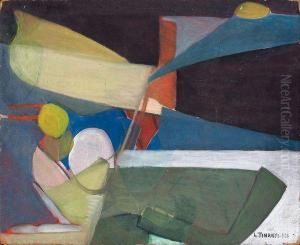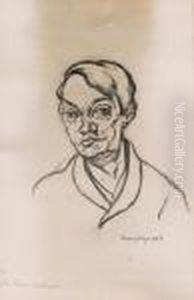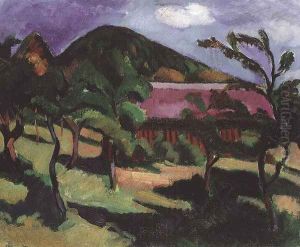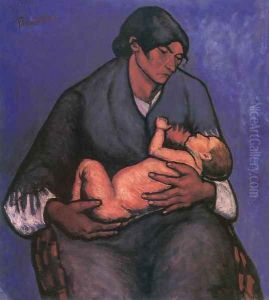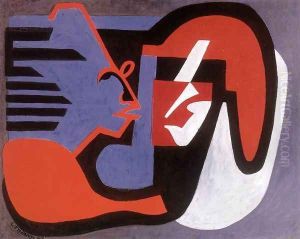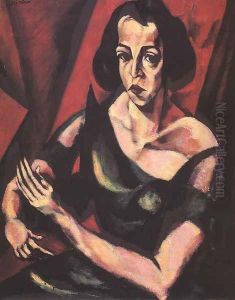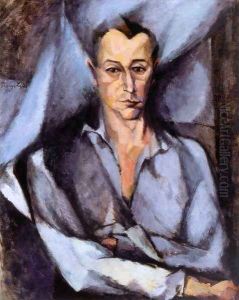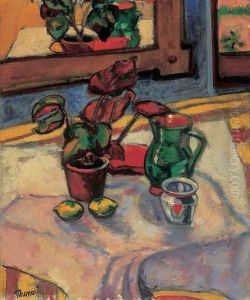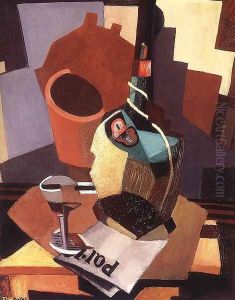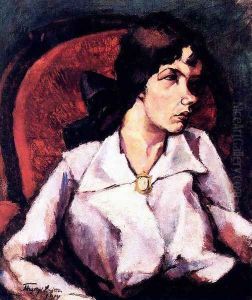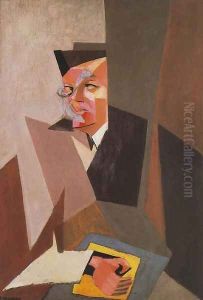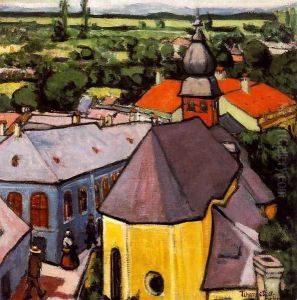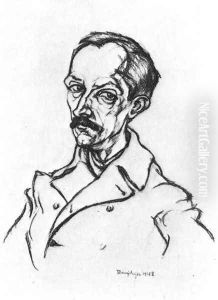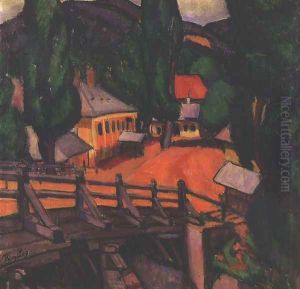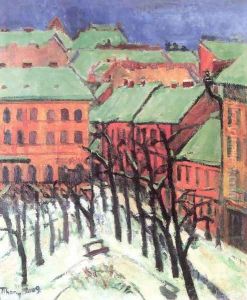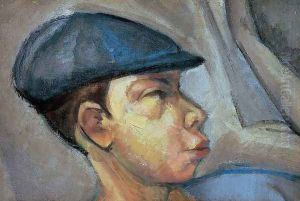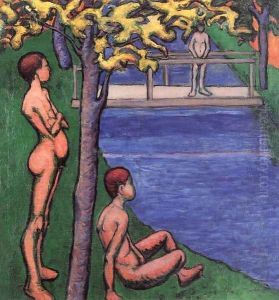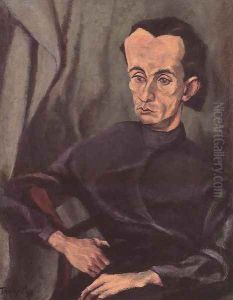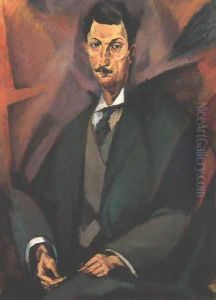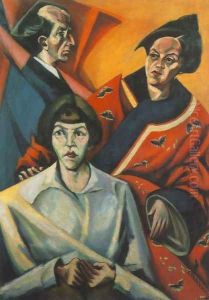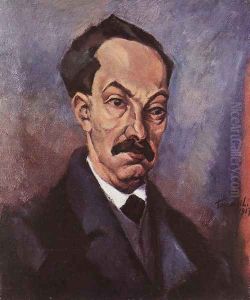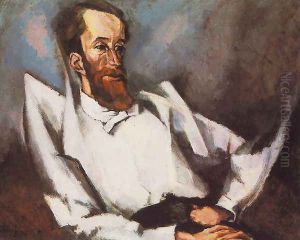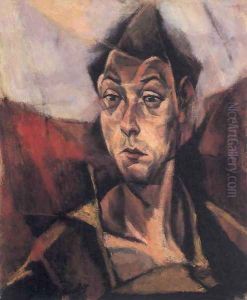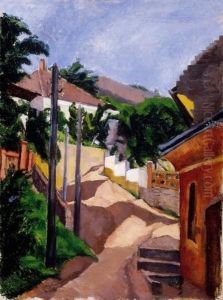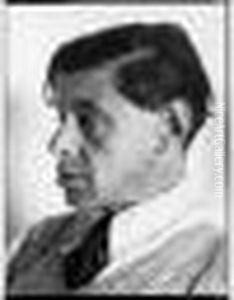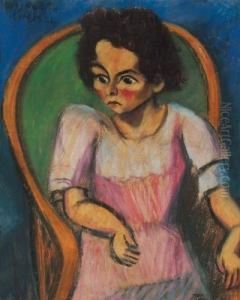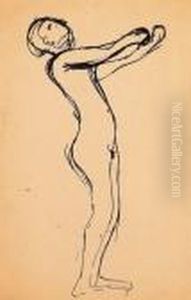Lajos Tihanyi Paintings
Lajos Tihanyi was a Hungarian painter and graphic artist, born on October 29, 1885, in Budapest, Hungary. He was an influential figure in the early 20th-century Hungarian avant-garde movement and a key member of the influential group 'The Eight' (Nyolcak), alongside other prominent artists such as Róbert Berény, Dezső Czigány, and Béla Czóbel.
Tihanyi's early work was characterized by a strong influence from post-impressionism and symbolism. As his style evolved, he became more interested in the simplification of forms and the use of strong, expressive colors, leading him towards a more abstract style. After moving to Paris in 1919 due to the political situation in Hungary, Tihanyi became part of the city's bustling art scene, where he was exposed to various modern art movements including cubism and constructivism.
Despite living in poverty for much of his life in Paris, Tihanyi continued to develop his artistic style, with his works during this period characterized by a more geometric approach, reflecting the influence of the modernist movements he was exposed to. Tihanyi's work from the Paris period also showed a preoccupation with the human figure, often depicted in a state of solitude or alienation, which can be seen as a reflection of his own feelings of isolation as an émigré artist.
Unfortunately, Tihanyi's career was cut short when he died on June 11, 1938, in Paris. His work, however, left a lasting legacy in Hungarian and European modern art, influencing future generations of artists. Despite his death, Tihanyi's art continues to be celebrated for its innovative approach and contribution to the Hungarian avant-garde movement.
